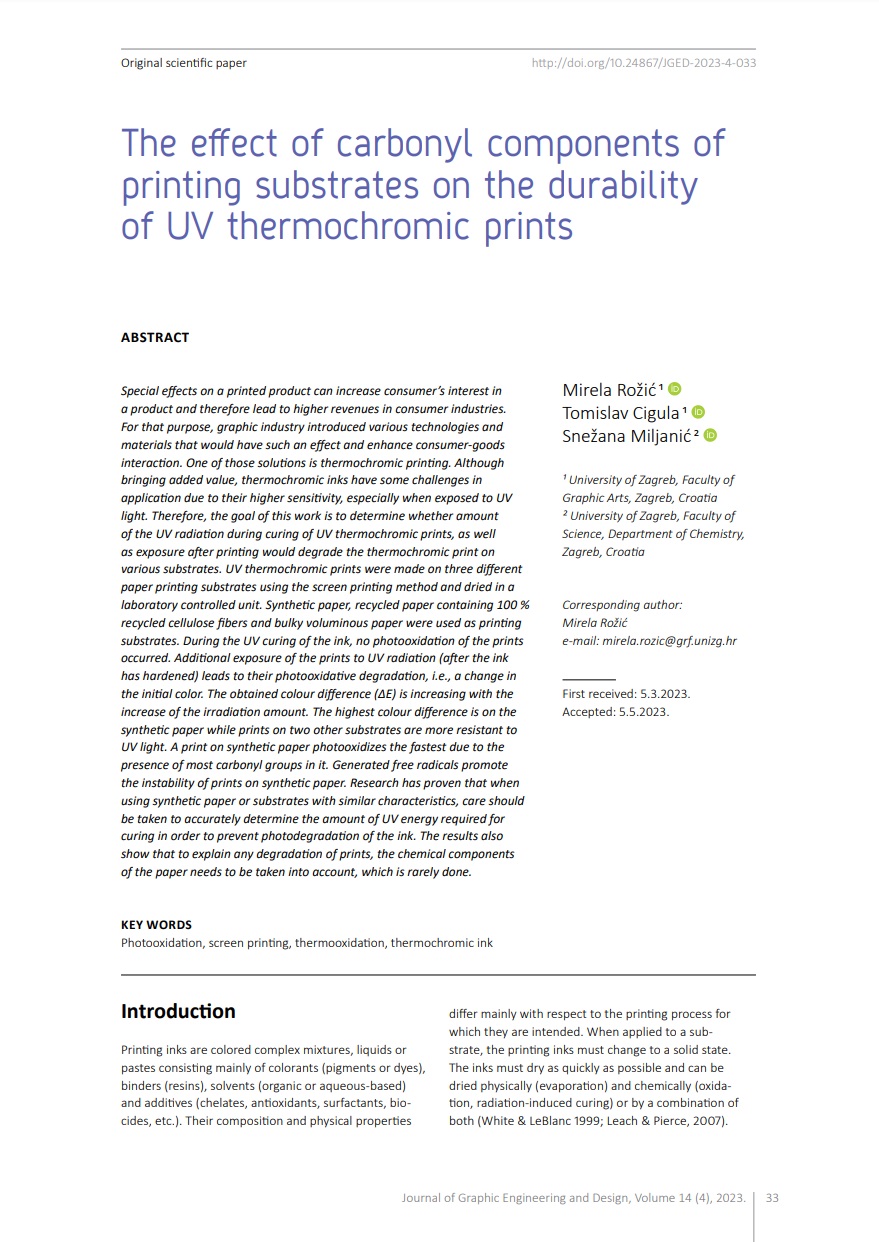The effect of carbonyl components of printing substrates on the durability of UV thermochromic prints

Published 2023-12-01
abstract views: 331 // Full text article (PDF): 363
Keywords
- Photooxidation,
- screen printing,
- thermooxidation,
- thermochromic ink
How to Cite
Abstract
Special effects on a printed product can increase consumer’s interest in a product and therefore lead to higher revenues in consumer industries. For that purpose, graphic industry introduced various technologies and materials that would have such an effect and enhance consumer-goods interaction. One of those solutions is thermochromic printing. Although bringing added value, thermochromic inks have some challenges in application due to their higher sensitivity, especially when exposed to UV light. Therefore, the goal of this work is to determine whether amount of the UV radiation during curing of UV thermochromic prints, as well as exposure after printing would degrade the thermochromic print on various substrates. UV thermochromic prints were made on three different paper printing substrates using the screen printing method and dried in a laboratory controlled unit. Synthetic paper, recycled paper containing 100 % recycled cellulose fibers and bulky voluminous paper were used as printing substrates. During the UV curing of the ink, no photooxidation of the prints occurred. Additional exposure of the prints to UV radiation (after the ink has hardened) leads to their photooxidative degradation, i.e., a change in the initial color. The obtained colour difference (ΔE) is increasing with the increase of the irradiation amount. The highest colour difference is on the synthetic paper while prints on two other substrates are more resistant to UV light. A print on synthetic paper photooxidizes the fastest due to the presence of most carbonyl groups in it. Generated free radicals promote the instability of prints on synthetic paper. Research has proven that when using synthetic paper or substrates with similar characteristics, care should be taken to accurately determine the amount of UV energy required for curing in order to prevent photodegradation of the ink. The results also show that to explain any degradation of prints, the chemical components of the paper needs to be taken into account, which is rarely done.
Article history: Received (March 5, 2023); Revised (April 29, 2023); Accepted (May 5, 2023); Published online (December 1, 2023)


